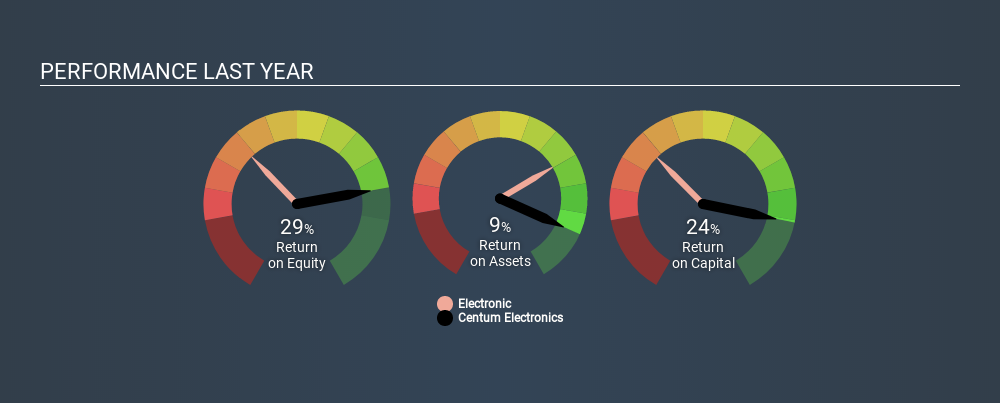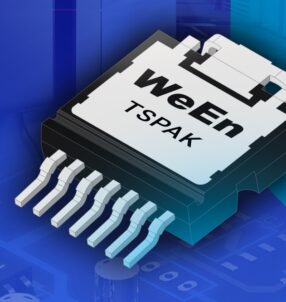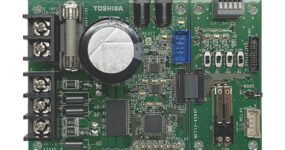Today we are going to look at Centum Electronics Limited (NSE:CENTUM) to see whether it might be an attractive investment prospect. Specifically, we’re going to calculate its Return On Capital Employed (ROCE), in the hopes of getting some insight into the business.
First of all, we’ll work out how to calculate ROCE. Second, we’ll look at its ROCE compared to similar companies. And finally, we’ll look at how its current liabilities are impacting its ROCE.
Table of Contents
ToggleUnderstanding Return On Capital Employed (ROCE)
ROCE is a metric for evaluating how much pre-tax income (in percentage terms) a company earns on the capital invested in its business. All else being equal, a better business will have a higher ROCE. Overall, it is a valuable metric that has its flaws. Author Edwin Whiting says to be careful when comparing the ROCE of different businesses, since ‘No two businesses are exactly alike.
How Do You Calculate Return On Capital Employed?
The formula for calculating the return on capital employed is:
Return on Capital Employed = Earnings Before Interest and Tax (EBIT) ÷ (Total Assets – Current Liabilities)
Or for Centum Electronics:
0.24 = ₹858m ÷ (₹11b – ₹7.3b) (Based on the trailing twelve months to September 2019.)
Therefore, Centum Electronics has an ROCE of 24%.
View our latest analysis for Centum Electronics
Is Centum Electronics’s ROCE Good?
One way to assess ROCE is to compare similar companies. Using our data, we find that Centum Electronics’s ROCE is meaningfully better than the 14% average in the Electronic industry. We consider this a positive sign, because it suggests it uses capital more efficiently than similar companies. Separate from Centum Electronics’s performance relative to its industry, its ROCE in absolute terms looks satisfactory, and it may be worth researching in more depth.
We can see that, Centum Electronics currently has an ROCE of 24% compared to its ROCE 3 years ago, which was 6.6%. This makes us think the business might be improving. The image below shows how Centum Electronics’s ROCE compares to its industry, and you can click it to see more detail on its past growth.

When considering ROCE, bear in mind that it reflects the past and does not necessarily predict the future. ROCE can be deceptive for cyclical businesses, as returns can look incredible in boom times, and terribly low in downturns. ROCE is, after all, simply a snap shot of a single year. If Centum Electronics is cyclical, it could make sense to check out this free graph of past earnings, revenue and cash flow.
What Are Current Liabilities, And How Do They Affect Centum Electronics’s ROCE?
Liabilities, such as supplier bills and bank overdrafts, are referred to as current liabilities if they need to be paid within 12 months. The ROCE equation subtracts current liabilities from capital employed, so a company with a lot of current liabilities appears to have less capital employed, and a higher ROCE than otherwise. To counteract this, we check if a company has high current liabilities, relative to its total assets.
Centum Electronics has total liabilities of ₹7.3b and total assets of ₹11b. As a result, its current liabilities are equal to approximately 67% of its total assets. Centum Electronics’s current liabilities are fairly high, which increases its ROCE significantly.
The Bottom Line On Centum Electronics’s ROCE
While its ROCE looks decent, it wouldn’t look so good if it reduced current liabilities. Centum Electronics looks strong on this analysis, but there are plenty of other companies that could be a good opportunity . Here is a free list of companies growing earnings rapidly.
If you are like me, then you will not want to miss this free list of growing companies that insiders are buying.
[“source=simplywall”]
| M | T | W | T | F | S | S |
|---|---|---|---|---|---|---|
| 1 | 2 | 3 | 4 | 5 | 6 | |
| 7 | 8 | 9 | 10 | 11 | 12 | 13 |
| 14 | 15 | 16 | 17 | 18 | 19 | 20 |
| 21 | 22 | 23 | 24 | 25 | 26 | 27 |
| 28 | 29 | 30 | 31 | |||




























